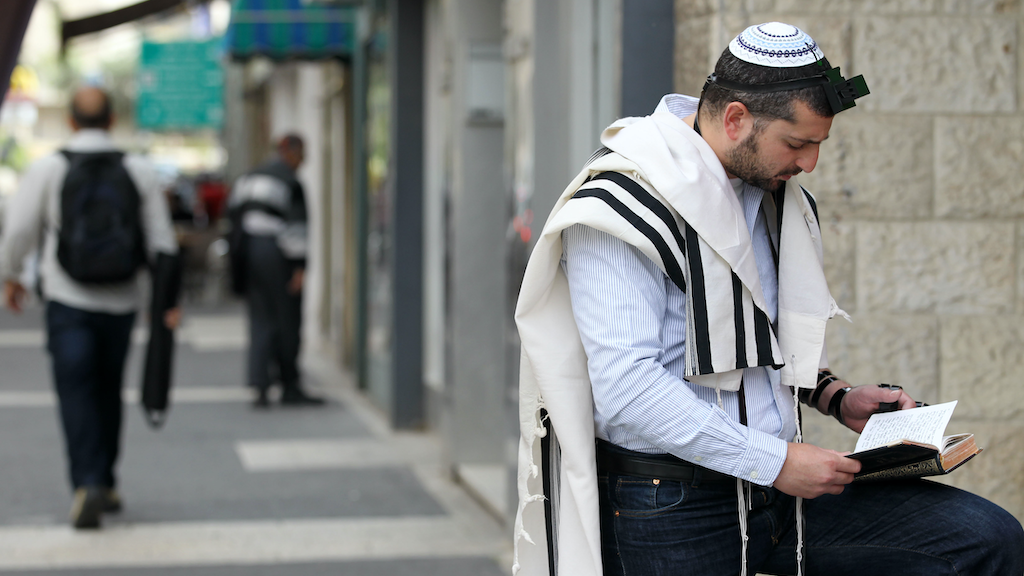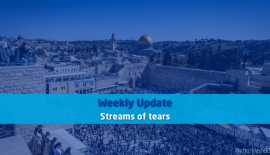Tefillin – Signs of the Faith
In this series, ‘Signs of Faith’, objects that express Jewish faith are explained and discussed.
“You shall bind them as a sign on your hand, and they shall be as frontals on your forehead.” Deuteronomy 6:8
They form a distinctive attribute for the prayers: the tefillin, the phylacteries. You have probably seen them sometimes. They consist of two small leather boxes. One is bound with a leather belt on the forehead, the other on the upper arm. In Hebrew, the boxes are called batim (plural of bayit, house). They contain tiny parchment scrolls on which the four Torah passages are written which command wearing the tefillin (Deuteronomy 6:4-9 and 11:13-21; Exodus 13:1-10 and 13:11-16). In the ‘house’ on the arm, the four texts are written on the same piece of parchment. The ‘house’ on the forehead is divided into four compartments, each containing a parchment with four passages. This practise goes back to second temple times, as tefillin found in Qumran show.
The Bible does not explain how the ‘sign on your hand’ or the ‘reminder on your forehead’ (Exodus 13:9) should look. That was handed down in the tradition of the Scribes.
The tefillin shel rosh is put in the centre of the forehead, right above the hairline. This is derived from a comparison with Deuteronomy 14:1, which apparently indicates a spot where hair grows. The knot of the leather strap lies in the neck; the two ends fall over the shoulder and the breast.
The tefillin shel yad is put on the upper arm, near the heart (Deuteronomy 11:18). The strap is wrapped seven times around the lower arm, between elbow and wrist. Then it is wrapped around the hand, forming the letter shin. Finally, it is wound three times around the middle finger, then Hosea 2:18-19 is read, in those verses God pronounces three times that He takes Israel as His bride. The windings and the knots together form the letters of Shaddai: the Almighty.
The tefillin are worn during the morning prayers on weekdays, but not on Shabbat, the High Holidays and the three Pilgrimage Festivals. These festive times are in themselves a ‘sign’ between God and the people of Israel (Exodus 31:17).






